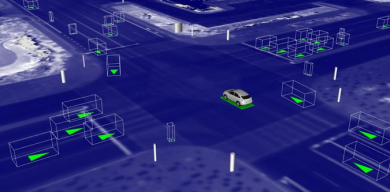What Virtual Reality Can Teach a Driverless Car
As the computers that operate driverless cars digest the rules of the road, some engineers think it might be nice if they can learn from mistakes made in virtual reality rather than on real streets.
Companies like Toyota, Uber and Waymo have discussed at length how they are testing autonomous vehicles on the streets of Mountain View, Calif., Phoenix and other cities. What is not as well known is that they are also testing vehicles inside computer simulations of these same cities. Virtual cars, equipped with the same software as the real thing, spend thousands of hours driving their digital worlds.
Think of it as a way of identifying flaws in the way the cars operate without endangering real people. If a car makes a mistake on a simulated drive, engineers can tweak its software accordingly, laying down new rules of behavior. On Monday, Waymo, the autonomous car company that spun out of Google, is expected to show off its simulator tests when it takes a group of reporters to its secretive testing center in California’s Central Valley.
Researchers are also developing methods that would allow cars to actually learn new behavior from these simulations, gathering skills more quickly than human engineers could ever lay them down with explicit software code. “Simulation is a tremendous thing,” said Gill Pratt, chief executive of the Toyota Research Institute, one of the artificial intelligence labs exploring this kind of virtual training for autonomous vehicles and other robotics.

01. November 2017
AUTOMAT VOR ORT: KONFERENZ AUTOMATICAR 2020
Am 16. September findet der Fachkongress AUTOMATICAR zum 2. Mal änlässlich der ...
»weiterlesenAUTOMAT vor Ort: Konferenz AUTOMATICAR
Am 12. April fand das erste Mal die von der Mobilitätsakademie des TCS organisierte ...
»weiterlesenAutomat vor Ort: EPTA Conference 2017
EPTA Conference 2017 „Shaping the Future of Mobility“ Luzern, Verkehrshaus, Mittwoch, 8. ...
»weiterlesenAuto-mat vor Ort: Automatische Shuttlebusse tpf
Am 22. September war www.auto-mat.ch live vor Ort, als die ersten beiden automatischen ...
»weiterlesen


